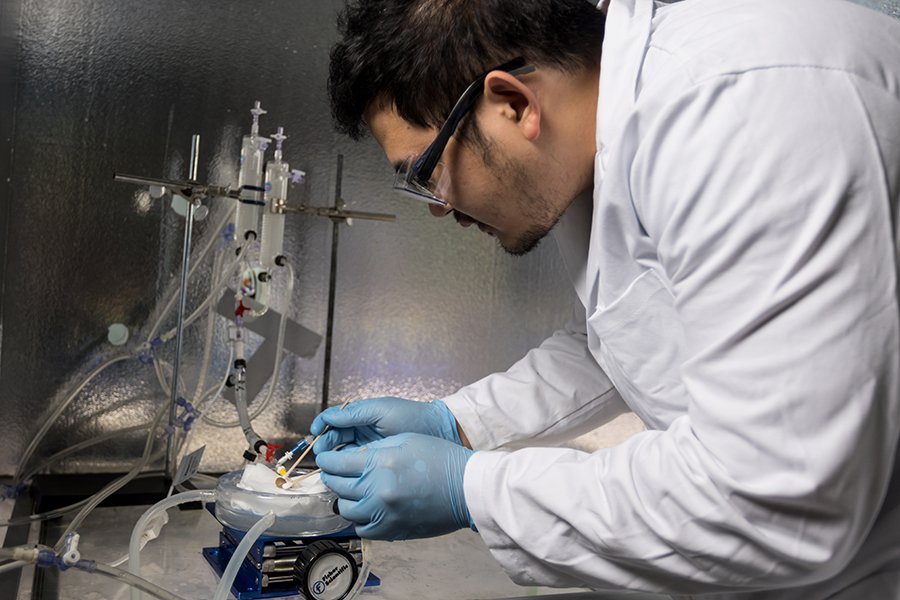Tech Digest

New $20M institute will use AI to mitigate climate effects
Tackling Earth’s hefty carbon emissions is a mighty task, which is why University of Minnesota researchers are leveraging farms and forests—and AI—to do it. The University recently received a $20 million grant over five years from the National Science Foundation (NSF) and the U.S. Department of Agriculture’s (USDA) National Institute of Food and Agriculture (NIFA) to lead a new National Artificial Intelligence Research Institute. Dubbed the AI Institute for Climate-Land Interactions, Mitigation, Adaptation, Tradeoffs and Economy (AI-CLIMATE), the research center will use artificial intelligence techniques to create more climate-smart practices that will absorb and store carbon while simultaneously boosting the economy in the agriculture and forestry industries.

Among the most cited researchers
It’s no small feat to author so many important scientific papers that you land in the top 1 percent of citations in your field. Four CSE faculty members—R. Lawrence Edwards, Dan Knights, Tony Low, and Donald Truhlar—did just that. They were named among the most “Highly Cited Researchers” worldwide by Clarivate Analytics, showing that they have a broad and significant influence in their field.

First-of-its-kind kidney cryopreservation has live-saving potential
Did you know that 20 percent of kidneys donated for transplantation each year can’t be used? Often, the organs don’t reach the recipients in time and can’t
be put on ice for longer than a few hours. This year, University of Minnesota scientists and engineers made a breakthrough in the field of kidney cryopreservation—or
preserving the organs at ultra-low temperatures—by successfully transplanting a rewarmed, functional kidney into a rat for the first time. Their research has the
potential to save thousands of human lives by enabling long-term storage of organs.

CSE Faculty receive top national awards
From National Academy inductions to Nobel Prize equivalents, our CSE faculty received some of the highest honors in the science and engineering fields this year. Among them are CSE Dean Andrew Alleyne (elected to the National Academy of Engineering), physics and astronomy Professor Boris Shklovskii (elected to the National Academy of Sciences), earth sciences Professor Emeritus David Kohlstedt (received the Vetlesen Prize, the Nobel Prize equivalent in the earth sciences field), biomedical engineering Assistant Professor Brittany Hartwell (awarded the international Michelson Prize for excellence in vaccine research), and mathematics Professor Svitlana Mayboroda (received a 2023 Blavatnik National Award honoring America’s most innovative scientists and engineers).

Sustainable magnet startup gets $17.5M from DOE
Back in 2014, CSE electrical engineering Professor Jian-Ping Wang developed the technology behind the Clean Earth Magnet, the world’s first high-powered, rare-earth-free permanent magnet. One of the “key building blocks for a sustainable society,” these magnets provide less expensive, more environmentally friendly components for electric vehicles, wind turbines, and other renewable energy technologies.
Last fall, Niron Magnetics, a startup company spun out of Wang’s research, received $17.5 million from the U.S. Department of Energy (DOE) to scale up its magnet manufacturing, paving the way for the U.S. to achieve its goal of net-zero emissions by 2050.

Breakthrough tinnitus treatment gets FDA approval
At least 25 million Americans suffer from tinnitus, or “ringing in the ears,” and treatments have long eluded medical researchers. But now a new, non-invasive device may hold the key to treating the pervasive condition—and it just received U.S. Food and Drug Administration (FDA) approval for use in the United States. Biomedical engineering Professor Hubert Lim is part of the international team that developed Lenire®, a device that combines sound therapy and electrical tongue stimulation to curb tinnitus symptoms.
In a recent clinical trial, nearly 80 percent of patients’ symptoms significantly improved after a 12-week course of treatment with the device. The device is now available for audiologists and ear, nose, and throat (ENT) doctors to prescribe to their patients.

Facing neurodegenerative diseases head on
Alzheimer’s, Parkinson’s, mad cow disease, and chronic wasting disease (CWD) all share a common feature—the buildup of misfolded proteins in the central nervous system. Detecting these molecules is crucial for understanding and diagnosing these devastating disorders. University of Minnesota researchers, including electrical and computer engineering Professor Sang-Hyun Oh, recently developed a new diagnostic technique to make the process faster and easier. Their “NanoQuIC” technology cuts detection times from about 14 hours to four and increases the sensitivity by a factor of 10, opening a door for earlier treatment and mitigation of various neurodegenerative diseases that affect both humans and animals.

Tiny galaxy with big star power
Even the tiniest of stars can have the biggest impact. Or at least that’s what CSE astrophysics researchers found when they looked more than 13 billion years into the past to discover a minuscule galaxy that generated new stars at an extremely high rate for its size. Spotted using observations from the newly minted James Webb Space Telescope, the galaxy is one of the smallest ever discovered at this distance—around 500 million years after the Big Bang. Studying its unique properties could help astronomers learn more about galaxies that were present shortly after the Universe came into existence.

Revealing the polar regions in stunning detail
You can now take a virtual, high-definition hike through the Earth’s polar regions, thanks to researchers at the University’s Polar Geospatial Center (PGC). Their recently created maps and videos use high-resolution data from polar-orbiting satellites about 400-700 kilometers above Earth. In addition to being the most detailed polar maps ever created, the images can provide environmental researchers with new insights into the effects of climate change over time.

Growing the nation's semiconductor workforce
The global semiconductor market is expected to become a trillion-dollar industry by 2030—but with increasing demand for jobs comes the need for those who can do them. CSE’s Technological Leadership Institute (TLI) recently announced the launch of the Minnesota Semiconductor Manufacturing Consortium, a groundbreaking initiative aimed at upskilling Minnesota’s technical workforce for careers in semiconductor manufacturing. The consortium is supported by industry leaders Honeywell, Collins Aerospace, and Polar Semiconductor; the University’s own Minnesota Nano Center; and the Minnesota Department of Employment and Economic Development (DEED).
